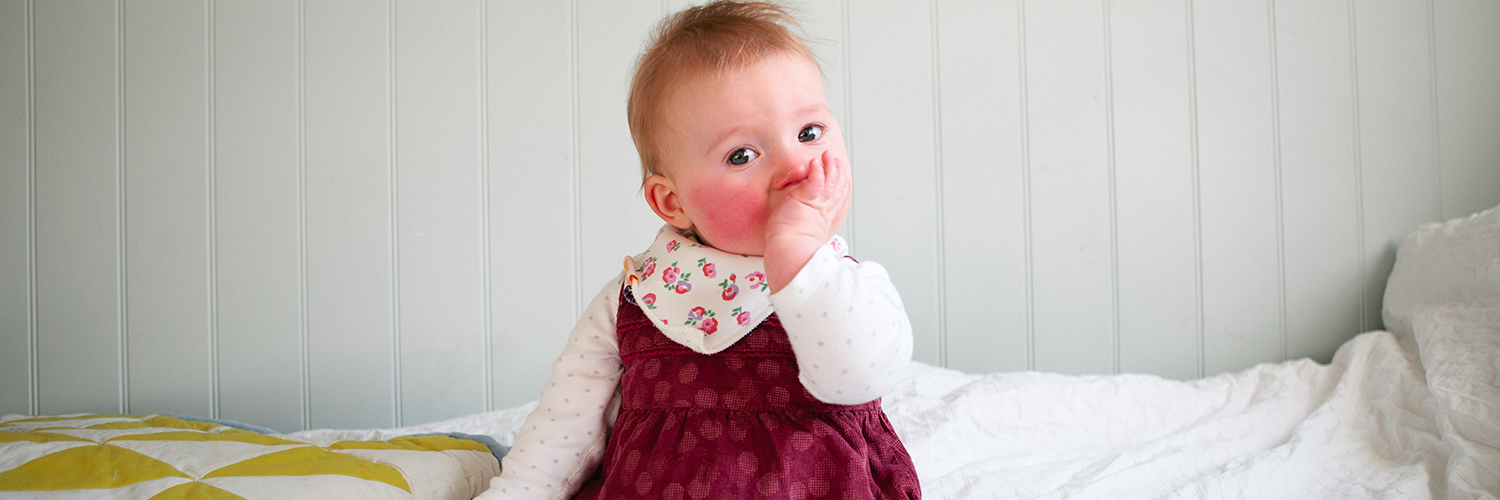A teething rash, marked by redness and irritation around the mouth, can happen when a baby’s teeth start growing. It might make them feel uncomfortable and fussy, but you can usually make them feel better with simple at-home remedies.
What’s a Teething Rash?
A teething rash (or drool rash) is a common skin irritation around a baby’s mouth, chin, and sometimes the neck during teething, when their first teeth start to come through their gums.
As babies begin to teethe, they produce more saliva, which can lead to increased drooling. The excess saliva can cause irritation and redness of the delicate skin around the mouth, resulting in a rash.
Common signs of teething rash include:
- Red, slightly raised patches of skin
- Dryness
- Chapping
- Small bumps
Teething rashes are usually mild and temporary but can cause discomfort or fussiness for the baby if left untreated.
How to Treat a Teething Rash
Several at-home remedies can help soothe the teething rash and alleviate discomfort for your little one, including the following recommendations:
- Keep the affected area clean and dry by gently wiping it with a soft cloth
- Apply a gentle barrier cream or moisturizer to protect the skin, such as Aquaphor or lanolin cream
- Use a mild, fragrance-free soap when bathing your baby to avoid aggravating the rash
- Offer your baby a chilled teething toy or clean, wet washcloth to chew on
If the rash persists, or if pimples or honey-colored lesions occur, consult your pediatrician for further evaluation and treatment advice.
Other Common Signs of Teething
In addition to teething rash, there are other signs that your baby may be experiencing teething-related discomfort, including:
- Increased drooling
- Swollen or tender gums
- Excessive chewing or biting on objects
- Irritability or fussiness
- Pulling or rubbing at the ears
- Difficulty sleeping
- Diarrhea or loose stools
- Loss of appetite
- Low-grade fever (below 100.4°F)
While teething rash and other symptoms can be uncomfortable for your baby, you can provide relief at home by offering chilled teething toys, gently massaging the baby’s gums, and applying a clean, damp cloth to any irritated areas. However, if your baby’s symptoms worsen or if you have any concerns about their health, contact your pediatrician for guidance and support.












